You are here
Federal Deficit and Debt: August 2020
Every month the U.S. Treasury releases data on the federal budget, including the current deficit. The following contains budget data for August 2020, which was the eleventh month of fiscal year (FY) 2020.
Current Federal Deficit
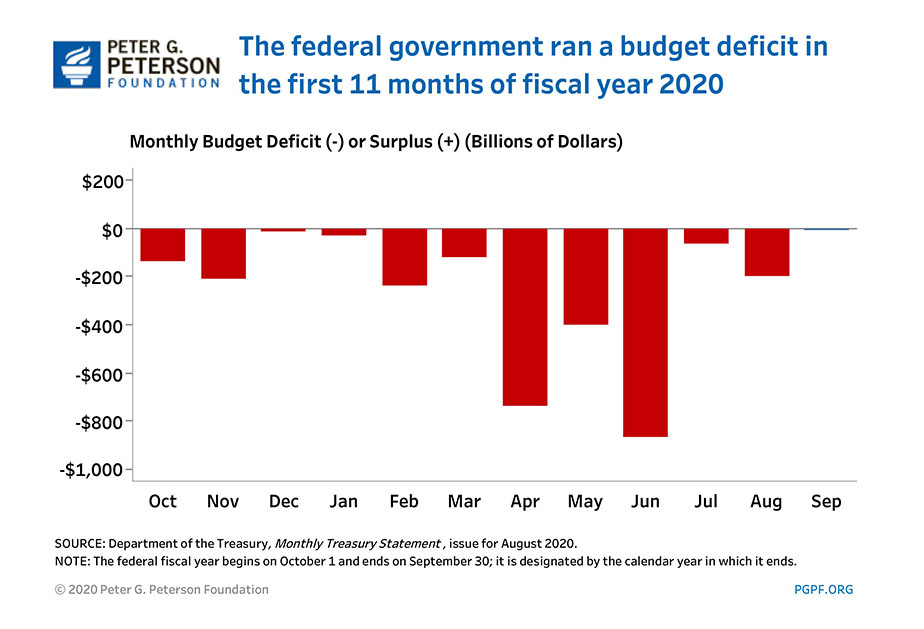
- Federal Budget Deficit for August 2020: $200 billion
- Federal Budget Deficit for August 2019: $200 billion
The deficit for August 2020 was the same size as the deficit recorded in August 2019. However, both of those months were affected by shifts in the timing of certain federal payments. In 2019, payments were shifted into August because September 1 fell on a weekend; in 2020, payments were shifted out of August and into July because August 1 fell on a weekend. Without those shifts, the August 2020 deficit would have been $109 billion larger than the deficit in August 2019.
Cumulative Federal Deficit
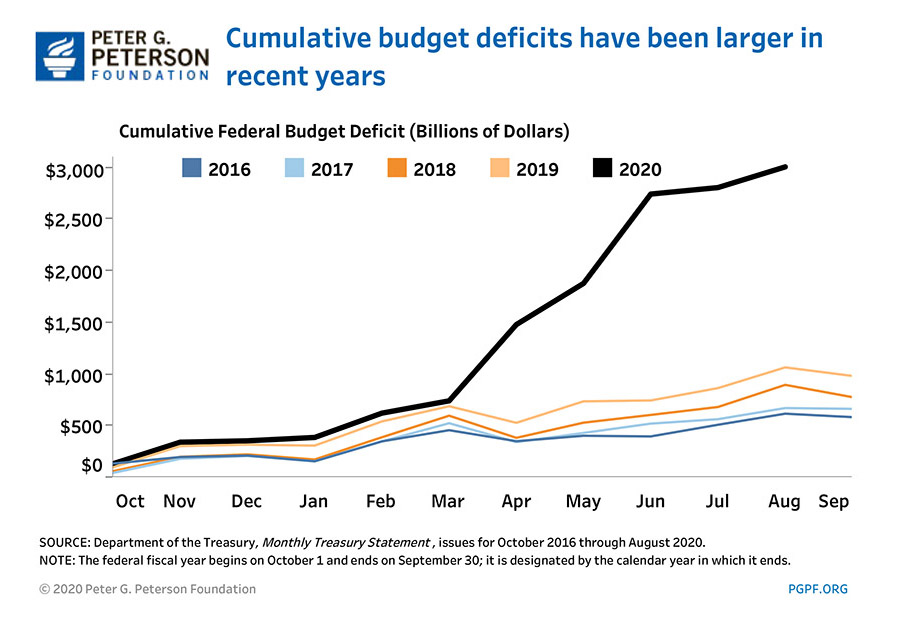
- Cumulative FY20 Deficit through August 2020: $23,007 billion
- Cumulative Budget Deficit over same period in FY19: $1,067 billion
The cumulative deficit through the first 11 months of FY20 was $1,940 billion larger than it was through the first 11 months of FY19. The increase in the cumulative deficit reflects a $1,899 billion increase in outlays and a $41 billion decrease in revenues.
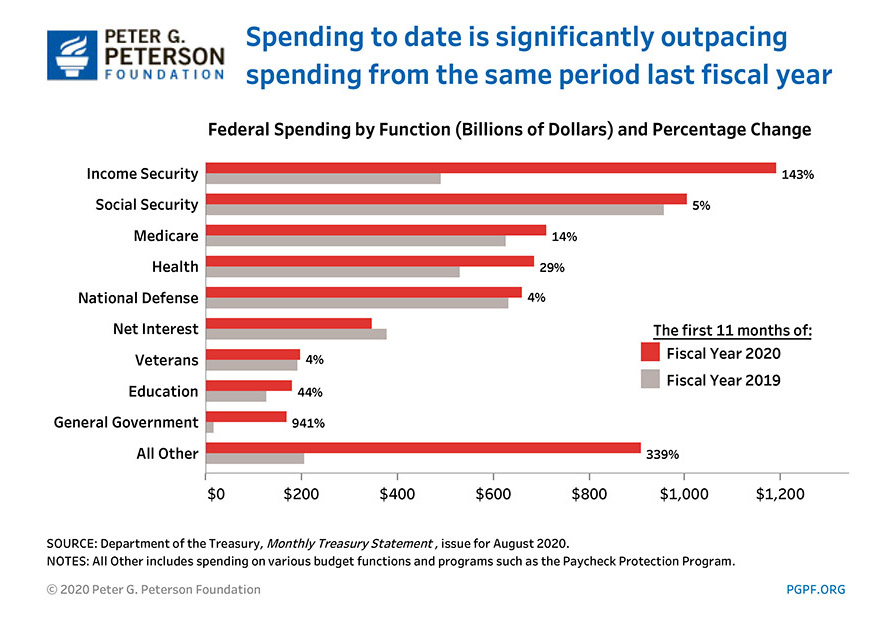
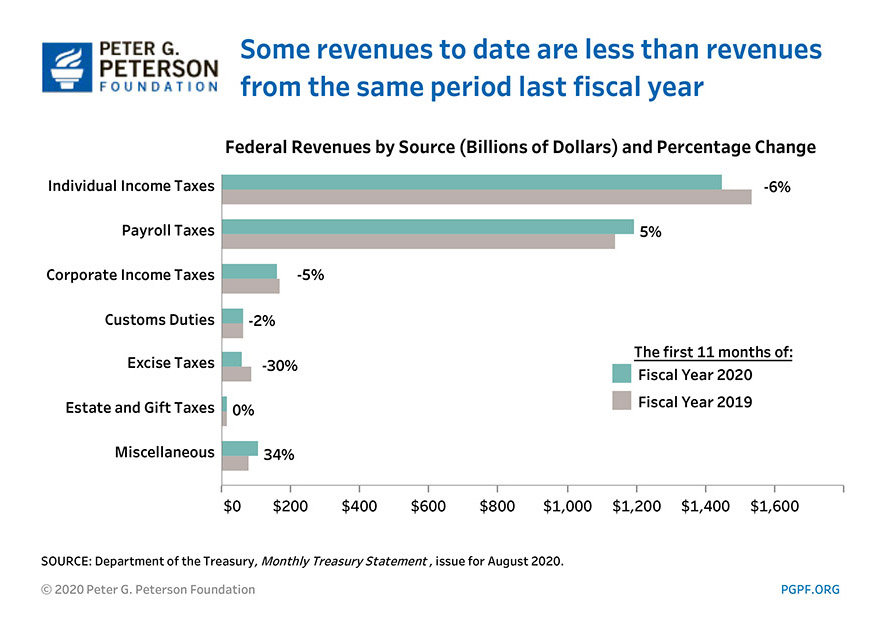
National Debt
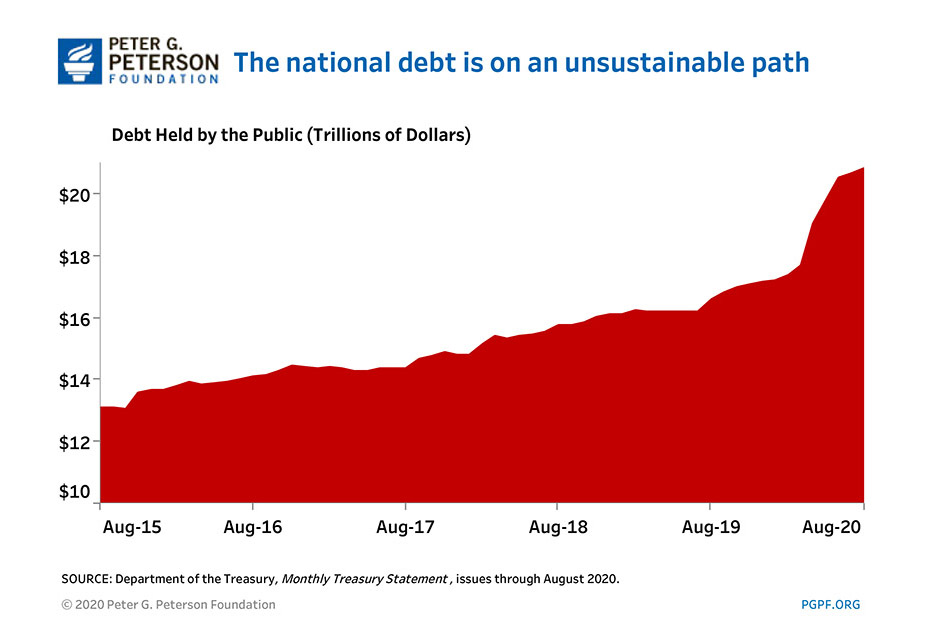
- Debt Held by the Public at the end of August 2020: $20.8 trillion
- Debt Held by the Public through August 2019: $16.6 trillion
The deficit varies from month to month and some months may even record a surplus — for example, when taxpayers are submitting their personal income taxes at the filing deadline. The recent increases in debt reflect the effects of the pandemic and the government’s decision to support those who were negatively affected by the closure of much of our economy to prevent the spread of COVID-19. Once the situation has stabilized, focus needs to return to the country’s underlying fiscal situation.
